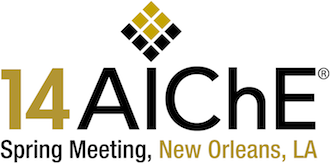

Implementing an effective process safety system goes beyond documented policies and procedures. It requires behavioral reliability in its execution. So what do organizations need from employees to prevent catastrophic events?
This presentation looks at process safety excellence form the point of view of employees and covers five essential issues to creating engagement:
- Educate employees about the difference between process safety and personal safety. If this distinction is not understood, people may mistakenly believe that good performance in personal safety is the same as effective control of the potential for catastrophic events. While personal safety exposures are typically very apparent in the workplace, mounting process safety issues can be developing silently in the background. Employees have a role in raising process concerns just as they would alert management to obstacles in the workplace that impact their personal safety.
- Help employees maintain a sense of vulnerability. Employees learn to accept as normal the risk they live with every day. Unfortunately their comfort level can serve to lower the rigor and urgency with which policies and procedures are implemented and maintenance items are addressed. This does not, however, change the risks associated with the chemical that they are handling. Developing and maintaining a healthy sense of respect for workplace exposures is critical to creating a culture where employees understand the importance of consistently following process management disciplines.
- Create a culture where it’s okay to “cry wolf”. Too often employees feel that if they raise a concern that turns out to be nothing, they will be punished or ridiculed. The path of least resistance is to assume that it is someone else’s job to raise an issue or the observed deviation from normal is not a big deal. In a strong process safety culture, the little boy who cried wolf would get the key to the city, assuming he brought facts and data to the table! Employees need to be knowledgeable enough to recognize when and how to intervene, and they need to be willing to do so. The challenge for leaders is to create a culture where employees not only recognize when things start to go off track, but they are willing and able to intervene to prevent a small problem from becoming a major event.
- Communicate that process safety is important. One organization we worked with once had two small chemical releases in separate plants. At the next senior leadership team meeting, while the safety manager reviewed the incidents, the president wondered aloud why he had not been made aware of them at the time. The safety manager responded that the president must be doing something that makes people think these type of events are unimportant to him.
- Live up to your role as leaders. Leaders have both systemic and symbolic roles with respect to engaging employees in process safety. The systemic role is to ensure that the “consequence systems” in the organization recognize and support employees who raise process safety issues, no matter how seemingly small. The symbolic role is to promote the contributions that employees make to improving process safety, thereby demonstrating that management values their input.
Engaging employees in catastrophic event prevention requires a culture of commitment, where safety isn’t about just following the rules or “checking the box”; it’s about going the extra mile for safety because it’s the right thing to do. Leadership actions have the greatest impact on creating a culture where employees feel accountability and ownership for the organization. To the extent that the culture helps employees feel safe and comfortable raising issues, employees will be more willing to give the discretionary effort required to support all aspects of safety.
Learning objectives
Participants learn:
- The role employees play in process safety: Why they are important partners in detecting issues and assuring reliability
- How leaders can help employees develop a sense of accountability and ownership for safety
- What employees need to know
- The two essential roles leaders play in leading process safety
